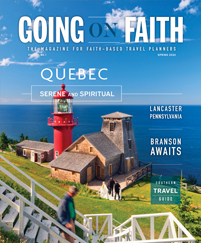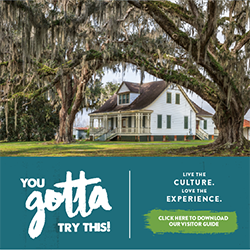Below the skyscrapers and beyond the lakefront, the churches of Chicago have a fascinating story to tell.
Chicago has been a favorite Midwestern travel destination for generations, and there are hundreds of ways for groups to enjoy the area. Among the most compelling for church groups may be getting to know the city by studying its religious heritage. The churches of Chicago give visitors a glimpse into the rich and diverse immigrant history of the city, providing a perspective on the area that few major attractions can give.
There’s more to explore beyond the city limits, too. In suburban areas all around the city, tourism destinations have a host of activities and themed itineraries that can meet the needs and interests of faith-based travel groups.
Next time you take a group to Chicagoland, take the opportunity to see the city through the lens of faith.
Chicago’s Neighborhoods
In many ways, the story of Chicago is the story of the various ethnic groups that migrated to the area over the years. Each of those groups brought their own religious traditions and practices, which were often deeply woven into their culture. When they arrived in Chicago and established neighborhoods, the churches they built became centers of community life.
“Chicago is made up of a community of neighborhoods that are still very vibrant and strong,” said Michele Pondexter, director of diversity sales at Choose Chicago. “So you have beauty and cultural history that run very deep, and we have some beautiful churches.”
One of the best examples of that is St. John Cantius Church in the city’s Polish neighborhood. The parish was founded in 1892 with the influx of Polish immigrants to Chicago. Work soon began on building the church, which was dedicated in 1898. Today, the church is an example of Polish culture and late 19th century architecture.
“It’s absolutely stunning,” Pondexter said. “The stained glass is just amazing.”
Temple Shalom downtown is evidence of the Jewish heritage in the city. In addition to touring the synagogue, groups can attend a Friday Shabbat service there to learn about Jewish worship practices.
Also downtown, the St. James Cathedral is the home of one of the oldest Episcopalian congregations in the United States.
“The altar in that church is where Abraham Lincoln prayed before he gave his speech at the Republican National Convention here in Chicago,” Pondexter said.
At the University of Chicago, the Rockefeller Memorial Chapel is known as one of the city’s most striking sanctuaries.
“It’s of very high stature in our community,” Pondexter said. “There’s a mosaic ceiling decorated with more than 100,000 tile pieces.”
Groups can learn about Chicago’s substantial Greek population at the newly opened National Hellenic Museum in Greektown, which is home to several historic Greek Orthodox churches.
To complement these historic visits, Pondexter recommends that groups take an architectural tour or a riverboat tour of downtown Chicago; the tours highlight modern aspects of the city and Chicago’s role as the birthplace of the skyscraper.
Zion on the Lake
In the northern part of Illinois, near the border with Wisconsin, Lake County stretches out along the shores of Lake Michigan. Groups that make the short drive up from Chicago can choose from more than 20 itineraries that the Lake County Convention and Visitors Bureau has compiled, including one themed around religious sites.
Among the most interesting sites on the religious itinerary is in the community of Zion, where John Alexander Dowie, a local who established the Christian Catholic Church, attempted to create a religious colony. Groups can tour his 1901 mansion at the center of the planned city as well as the surrounding community.
“He was trying to create some kind of Christian utopia,” said Jayne Nordstrom, group tour manager at the CVB. “You can tour his home and get the story of how that started. The church based on what he was doing is still in existence. A lot of the streets are named for biblical figures, so it’s really an interesting place. He created a lace factory and a cookie factory here. This was really going to be its own city.”
Another famous residence in the area has a religious connection as well. The Cuneo Mansion and Gardens is a 1916 home set on a 100-acre estate. In the late 1930s, the Cuneo family received special permission from the pope to build a private chapel in the home.
“It’s full of beautiful paintings and artifacts from that time,” Nordstrom said. “He was a very religious man.”
Groups touring the mansion can see the chapel and its 17th century altar, velvet-covered high-back chairs and hand-painted murals of the Stations of the Cross.
Catholic and Protestant groups alike will find something interesting at the University of St. Mary of the Lake, one of the largest Catholic seminaries in the country. The seminary is known for its architecture and gardens.
“There are five Bohemian crystal chandeliers hanging there that are replicas of a set that hangs in the East Room of the White House,” Nordstrom said. “The grounds are really beautiful, and groups can come in, take a tour and have lunch with the students.”









